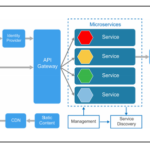Continuous Integration/Continuous Deployment: Revolutionizing Software Development Workflows and Efficiency
In today’s fast-paced digital landscape, software development teams face constant pressure to deliver high-quality applications rapidly. Continuous Integration (CI) and Continuous Deployment (CD) have emerged as transformative methodologies that not only streamline workflows but also significantly enhance overall efficiency in software development. By automating various stages of the development process, CI/CD enables teams to deliver updates more frequently, with improved quality and reduced risk.
Understanding CI/CD
Continuous Integration involves automatically integrating code changes from multiple contributors into a shared repository several times a day. Each integration is verified through automated testing, which helps identify bugs and issues early in the development cycle. This practice encourages developers to collaborate more effectively, as they receive immediate feedback on their changes.
On the other hand, Continuous Deployment extends the CI process by automating the release of code to production. Once the code passes the testing phase, it is automatically deployed, ensuring that new features and fixes reach users quickly. This eliminates the need for manual deployment processes, reducing human error and allowing teams to focus on creating value rather than managing releases.
Benefits of CI/CD
Enhanced Quality
One of the most significant advantages of CI/CD is the improvement in software quality. Automated testing frameworks play a crucial role in this process. By running a suite of tests each time code is integrated, teams can catch issues before they reach production. This leads to higher-quality software and a more reliable user experience.
Faster Time-to-Market
CI/CD enables faster delivery of features and fixes, which is crucial in a competitive landscape. With shorter development cycles, teams can respond to market changes, user feedback, and emerging opportunities more swiftly. This agility not only enhances customer satisfaction but also helps organizations maintain a competitive edge.
Improved Collaboration
CI/CD fosters a culture of collaboration among development, operations, and quality assurance teams. With shared repositories and automated workflows, team members are encouraged to communicate and coordinate their efforts. This collaborative environment breaks down silos and promotes a shared sense of responsibility for the software’s success.
Reduced Risk
Frequent deployments reduce the risks associated with releasing large, monolithic updates. Smaller, incremental changes are easier to manage, and if an issue arises, it is simpler to pinpoint and resolve. Rollbacks are also more straightforward, as teams can revert to previous versions without extensive downtime.
Challenges in Implementation
While the benefits of CI/CD are substantial, organizations may encounter challenges when adopting these practices. Transitioning from traditional development workflows to CI/CD requires a cultural shift and can be met with resistance. Teams must embrace automation and develop a mindset focused on continuous improvement.
Furthermore, setting up CI/CD pipelines can be complex, requiring the right tools and technologies. Organizations need to invest in training and infrastructure to ensure that teams can leverage CI/CD effectively.
Conclusion
Continuous Integration and Continuous Deployment have revolutionized software development workflows, enhancing efficiency and quality while reducing risks. By automating testing and deployment processes, organizations can deliver software faster and with greater reliability. The collaborative culture fostered by CI/CD not only improves teamwork but also empowers developers to innovate continuously.
As businesses navigate the challenges of digital transformation, embracing CI/CD practices will be crucial for staying competitive in the ever-evolving tech landscape. By investing in CI/CD, organizations position themselves to respond more effectively to user needs and market demands, ultimately driving success in their software development endeavors. In this new era of software engineering, CI/CD is not just an option; it is a necessity for thriving in a dynamic digital world.


